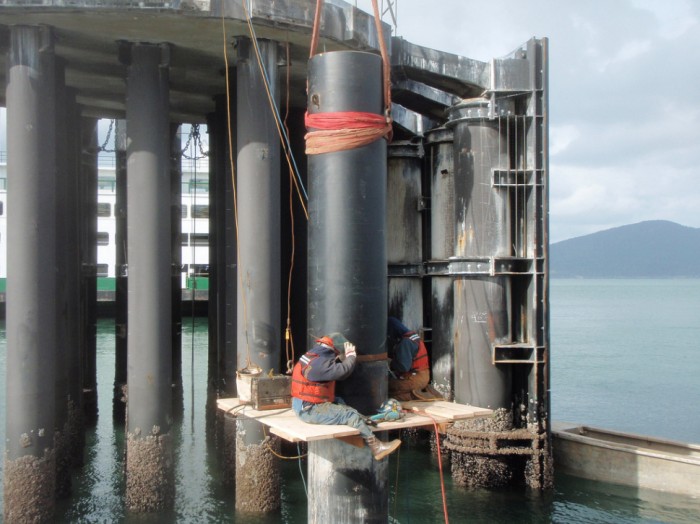With any ferry terminal, preservation is an ongoing task. Due to the marine environment, corrosion is rampant and repairs are needed. The overall goal of any terminal maintenance project is to repair and restore the terminal, which helps in preventing any disruptions in the normal operations of the ferry service. Over the past few years, Washington State Ferries division has been working on the preservation of the Anacortes Ferry Terminal tie-up slips used for ferries during layover. This terminal is well over 50 years old and is in need of some serious improvements. The various aspects of the most recent work happening includes repairing and replacing fenders as well as pilings. These locations are part of the wingwalls and dolphins against where different vessels pull up and rest. There was also work needed on the overhead loading structures, including walkways, mechanical systems, and elevator set ups. In addition, there was quite of bit of work needed in repairing the trestles, pilings, decking and concrete. When this portion of the work is complete, the terminal hopes to be in a position where they are meeting every scheduled sailing. They hope to have as many slips operational as possible to prevent having to move vessels on a daily basis.
The most extensive construction took place in what they refer to as “Slip 3”, which was to shore up timber dolphins and wingwalls that were far beyond their useful life. The hardware required for this project was not only unique in size, but had a variety of different grades of steel associated with them. In addition, all of the fasteners needed to be 100% melted and manufactured in the USA. The grades of bolts required spanned from a low carbon, mild steel ASTM A307A to higher strength headed bolts meeting ASTM A325 and A449. The diameter range was extensive as well, being anywhere from over one thousand ¾” headed bolts to a 2-3/4” diameter A307A hex bolt as well as 1-3/4” and 2” diameter A449 heavy hex bolts. Being that these fasteners are in a marine environment, hot dip galvanizing was a must to keep them from corroding.
